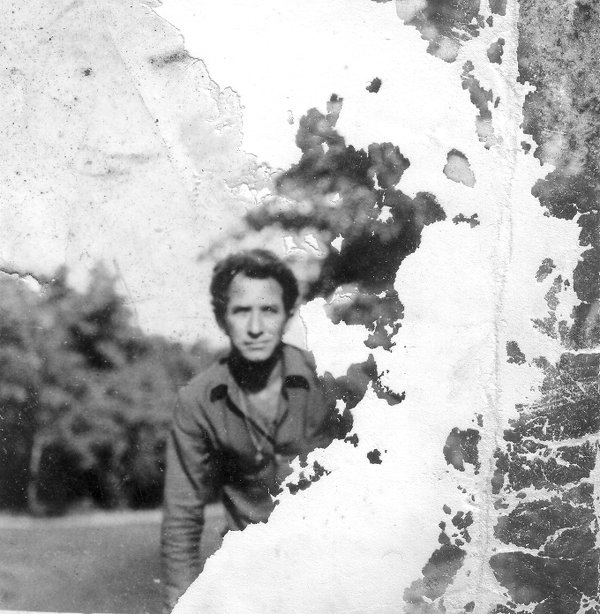What is "image reconstruction"?
This is when we introduce new objects, or background, to the content of a phototograph.
Typically, these techniques will be used when a photograph has been damaged.
Or
When it is desirable to remove an individual from a group photograph, to create a more personal image.
Below is a perfect example, as a result of recent flooding:
Isolate the subject
Isolating the subject is easier said than done... but with care, and attention to detail, we can avoid it looking like it has been cut with scissors.
The image can then be repaired at a pixel level (see Part 1.), though we are limited as the image is old, and has been washed out with the flooding
Thereafter, the image can be blended with a new background and foreground
Or
It can remain isolated, but feathered onto a neutral background.
Both formats are examined below, beginning with the isolation of the damaged photograph.

"Subject isolated"
The greyscales were also lifted slightly
Create a background
Once a suitable background image has been located (ideally one in keeping with the original photo), it can be resized to fit the final image.

Background chosen
Converted to B&W and adjusted
Foreground
Same procedure as with the background.
Both the background and foreground are modified, in an attempt to match the colour spread and strengths of the primary subject image.
This is to ensure that the subject appears to be naturally part of the overall image...
... something that is extremely difficult to achieve
They are both from a different time and place, and captured on modern photographic equipment (originally in full colour).
Almost, whatever we do... our eyes can register these differences.
The question is always whether the restorer is capable of manipulating the three images sufficiently to allow our brains to accept the fiction...
The key being to achieve the desired effect, within an appropriate time-frame
You can judge for yourselves whether this impossibility has been approached (not easy when you have just seen the creation of this fiction).
The completed assembly

"Assembled reconstruction"
Can you accept the fiction?
Is it viable for general photo restoration?
It is viable given that the subject is valued, and there are few other examples from the particular period.
However, this form of re-construction is not to everybody's taste... so we now examine how the subject can be isolated, and placed into a neutral background.
This saves on the time taken, to find, scale, position, and manipulate, two additional images.
The big question is whether the original image is strong enough (with detail and clarity) for it to stand alone, as an isolated portrait.
In this example, due to the age, and flood damage, the isolated subject only works, if viewed as a small image.
(The 'detail weakness' reveals itself at larger scales.)
However, when viewed in small scale format, it can work:

